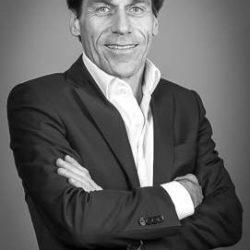Today’s offices were built to solve problems that existed in the past. But modern working practices are making those workspaces obsolete and paving the way for more innovative financing and usage-based models.
Changes in demographics and advances in technology are driving demand for a new way of working – a dynamic working environment that must adapt to the needs of its workers, rather than the other way around. Companies are looking to technology to create the workplace of the future – one that is focused on boosting staff productivity, recruitment and retention.
Within a generation, the notion of the office has moved from a place where staff sit at desks in closed offices, to open-plan offices, to new agile working environments in which staff may not have a desk at all. Meanwhile, flexible working has gone from being a worker entitlement to an essential tool that organisations believe will boost productivity.
A workplace that worked for baby boomers may not be suitable for millennials – digital natives who communicate remotely through smartphones, video conferencing and social media. They no longer see the office as a fixed permanent location where they go every day. Technology and the cloud mean employees can carry their offices with them wherever they are, and email allows them to be permanently connected.
This diminishes the importance of the physical workspace, and challenges companies to re-think the physical world. The rise of the usage economy means companies are no longer looking for ownership of physical assets, but rather seeking the flexibility to remain agile to business trends and economic cycles.
Maintenance is no longer the responsibility of the tenant. Landlords must partner with experts to provide a ‘future-fit’ workplace. At the same time, the pressure on companies to reduce costs and capital expenditure is another powerful factor driving companies to reduce their reliance on owning and managing physical office spaces.
Global companies are encouraging more of their staff to work from home in an attempt to control expenses as well as boost productivity and staff engagement. And as they sell off or close expensive office spaces in favour of new, more cost-effective spaces, they want a purpose-built offering.
The majority of people in knowledge-based roles can now do their jobs with little more than a phone, a laptop and an Internet connection. According to a survey by Deloitte, the workplace of 2020 is characterised as ‘elastic’ in nature. Elasticity must prevail in work practices and strategic decisions as digitisation and the social experience become even more ingrained in the worker’s day. For a workplace to remain agile and mobile, as well as data-centric, C-suite decision-makers must be able to predict what changes will occur in their industry and adjust their transformation plans constantly.
These changes mean the offices of the future must be multifunctional, adaptable spaces where employees can gather to innovate. For example, some companies now look for ‘activity-based offices’, which operate different zones, such as presentation rooms, larger rooms for generating ideas and smaller spaces for quiet working.
To reap the benefits of technology, businesses must re-think their approach to the office in terms of design and inventory. Leasing office space is a long-established trend, but with fewer people working office hours, in a smaller physical space, it is an approach that companies should apply at every level. As technology continues to advance, assets begin to depreciate as soon as they are bought – now more than ever. The notion of leasing commonplace office equipment and supplies suddenly becomes more appealing – and cost-effective – especially when cash flow may be needed for other elements of an agile workplace transformation.
If you want to be efficient you always need new technology and this is only possible if you lease. If you want to have ownership that means keeping an asset for five years, even if it’s obsolete, says Pascal Layan, COO of BNP Paribas Leasing Solutions.
As well as big global companies seeking to re-engineer their workplaces to fit the changing needs of staff and customers, smaller start-ups have grown up with a vision of the agile workplace. They may only need space on an hourly basis to meet clients or use video-conferencing facilities and are comfortable with pay-per-usage models. The onus is on landlords to provide a future-proof working environment.
Along with landlords and tenants, service and infrastructure providers are embracing the future workplace with subscription-based models. For example, Amazon’s cloud computing business is now taking on the likes of Microsoft and Cisco Systems with the launch of Chime, a video-conferencing service for its cloud computing users. The new service will enable customers to have conversations and video conferences wherever they are based, using desktop computers, iPhones or Android devices. This bundling of services on a pay-per-usage basis mimics the approach that mobile phone and broadband players take to consumer markets.
The use of subscription-based services in the offices of the future will accelerate as more millennials move into decision-making roles in the economy. PwC cites a Eurobarometer poll, which found that a third of 25–39-year-olds have used a sharing economy service – and are three times more likely to do so than those aged over 55.
The adoption of subscription-based models is driven by a shift in consumer behaviour. There are now a whole bunch of services people are happy to rent as consumers, and that is translating into the workplace. People don’t stop being people when they come into the work environment, adds Layan.

